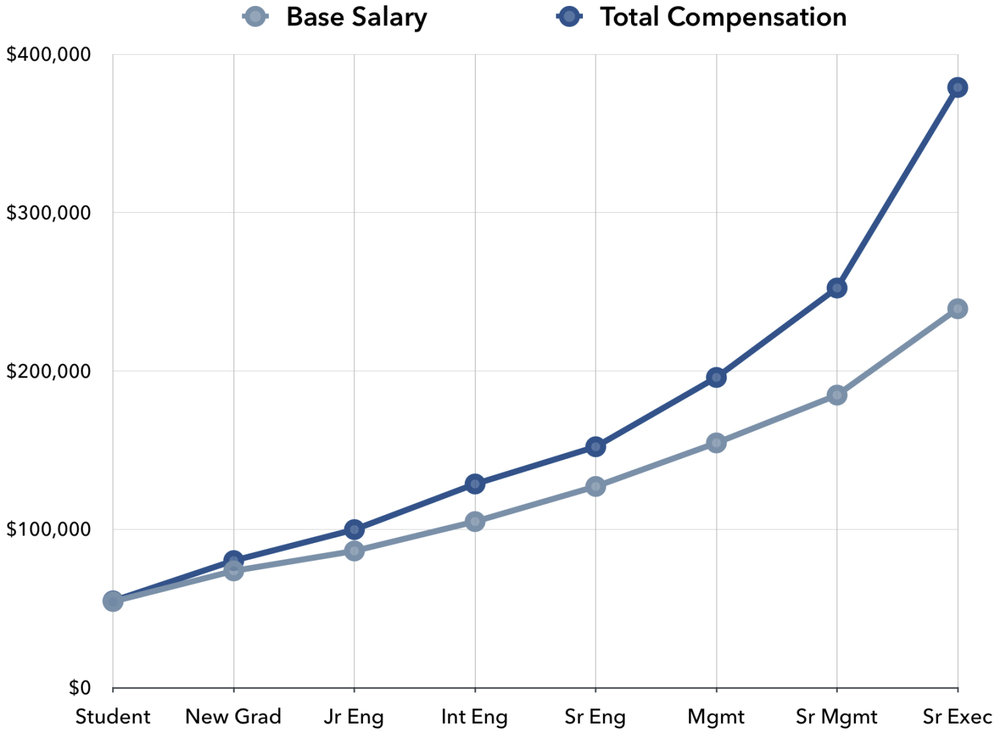
An average individual in this tax bracket would make $81,648 annually as a Structural Engineer. Structural Engineers make an average of $3.402 per paycheck after federal taxes. This does not include taxes specific to a metro area.
Average salary for a licensed structural Engineer within the United States
According to the 2013 survey by the Structural Engineer Institute (SEI), the average salary for a licensed structural engineer in the United States is $106,800 annually. The survey included responses from 728 structural engineers in various states throughout the U.S., and the data is based on gross annual income, including bonuses. This estimate includes income for full-time employees and part-time workers.
A degree in civil engineering is required for this position. It may also require at least two years of relevant experience. Dependent on the state of their practice, structural engineers might work on complex technical projects. They might also be involved with business matters. A Professional Engineer License may be required.

Based on experience and education, the average salary for Structural Engineers is $77,910 to $137.554. The highest education level required is a Master's degree. To get a better idea of the average structural engineer salary, consider the level of specialization and whether or not to enroll in skill-specific programs.
Average Structural Analyst Engineer salary in United States
Salary ranges for structural analysis engineers vary depending on location, education, experience, and other factors. A Structural Analyst Engineer in Fairfax, CA may make $83,534 annually. There are many factors that influence the range of salaries, including education, certifications and experience.
According to the Economic Research Institute in the United States, the median salary for structural analysis engineers should rise by 18% in five-years and reach $129.437 by 2027. However, structural engineers must increase their productivity to improve this figure. Tribby3D is one way to achieve this.
According to the Bureau of Labor Statistics in the United States, the average salary of structural analysis engineers is $102,000 USD. However, some engineers earn more than $134,000 a year. Salaries vary by location with the highest earning engineers making $180,000 annually.

Average Licensed Structural Engineer salary in India
Although the average salary for licensed structural engineers in India is about Rs 4.2 Lakhs, this number can vary significantly. Some engineers make more than Rs 10 lakhs. New graduates tend to make less because they don't have the experience. However, if you have worked in the field for a few years, you could expect to make considerably more.
For an entry-level structural engineer, the average salary in India is Rs 2,31 350 to Rs 7,64 200. Senior structural engineers can earn Rs 7,642,200. The employment rate for all other occupations is 4%. Engineering is a promising career choice for young professionals.
Salaries will vary by country and engineering branch. Structural engineers are employed by both public and private firms. Those who work for public companies make an average of $92,500. While those who work in the private sector make an average of $85,000, they earn $92,500 on average. Civil engineers in the bottom ten percent earn $51,000 per year and those in the top ten percent earn $97,000.
FAQ
What does an electrical engineer do?
They create power systems that can be used by humans.
They are responsible in designing, building, testing and installing all types and sizes of electric equipment for residential, commercial, and government customers.
They plan and supervise the installation of these systems.
Electrical engineers design and build electronic devices, circuits, components, and other equipment that convert electricity into useful forms.
What's the average hourly salary of engineers?
This will vary from person-to-person and company-to company. An average salary for a entry-level software engineer is about $60,000 per year. After a few years, the salary can rise to more than $100,000.
How long does it take to become an Engineer?
There are many routes to engineering. Some people choose to study right away after graduating from high school. Others prefer to enroll in college.
Some students will join a degree program straight from high school, whilst others will join a two-year foundation degree program.
After completing this, they might continue onto a three or four-year honors degree. Alternatively, they could opt to do a master's degree instead.
It is important to consider your future plans once you have graduated. Are you going to be a teacher or a worker in the industry?
It takes different stages to complete, depending on which university you go to and whether you are taking a part-time or full-time course.
There is no direct correlation between the time it takes to complete a qualification and the experience you have after graduation. Even if you have only spent one year at college it does not mean that you will have the required skills to be an engineer.
Statistics
- 2021 median salary:$95,300 Typical required education: Bachelor's degree in mechanical engineering Job growth outlook through 2030: 7% Mechanical engineers design, build and develop mechanical and thermal sensing devices, such as engines, tools, and machines. (snhu.edu)
- Job growth outlook through 2030: 9% (snhu.edu)
External Links
How To
How to Write Letters in Engineering Drawing
Two types of engineering drawings are available: technical drawings (also known as engineering sketches) and architectural drawings. The first one describes the product's physical characteristics, while the other shows how it should look. Both types contain detailed specifications, dimensions as well symbols and text. Engineers write these documents in their own language. They can refer to specific units or abbreviations as well as acronyms. These terms are known engineering lingo. This article explains exactly what they mean.
A letter is a formal, written communication between an individual or group. It usually contains a greeting, salutation, signature, date, and closing remarks. A self-introduction is a common addition to most letters. Some letters may include business details such legal agreements. Some letters may contain only greetings or signatures.
Engineers can use their professional expertise to design, plan, create, or build a machine or a bridge. Engineers should use precise language to communicate their work. The product, process, materials and methods are described in technical terms.
Engineers often use special terms to explain things. For example, "ampere", to refer to electric current, is a term used by engineers. Or they say "kilogram per meter squared" to measure mass. These terms are also known scientifically. Other engineers call them common names because they are commonly used. Common names are easier to remember and understand.
Sometimes technical terms are abbreviated. An abbreviation can be used to denote a longer term. For example, "kW" stands for kilowatt. If you see "KW", you will know that it is kilowatt. You don't have to memorize the full name.
In addition to technical terms, there are lots of other abbreviations and acronyms used by engineers. These are similar to abbreviations, but they are composed of multiple words. Examples include "IEC," "DIN," and "ANSI." These are essential because they facilitate communication and make it easier.
Engineers use their jargon in a way that is not consistent with standard spelling rules. They may spell out numbers using digits instead number. They may use different capitalizations. Capitalization refers the way a word is capitalized. Words beginning with vowels sound differently are spelled than words that begin using consonants.